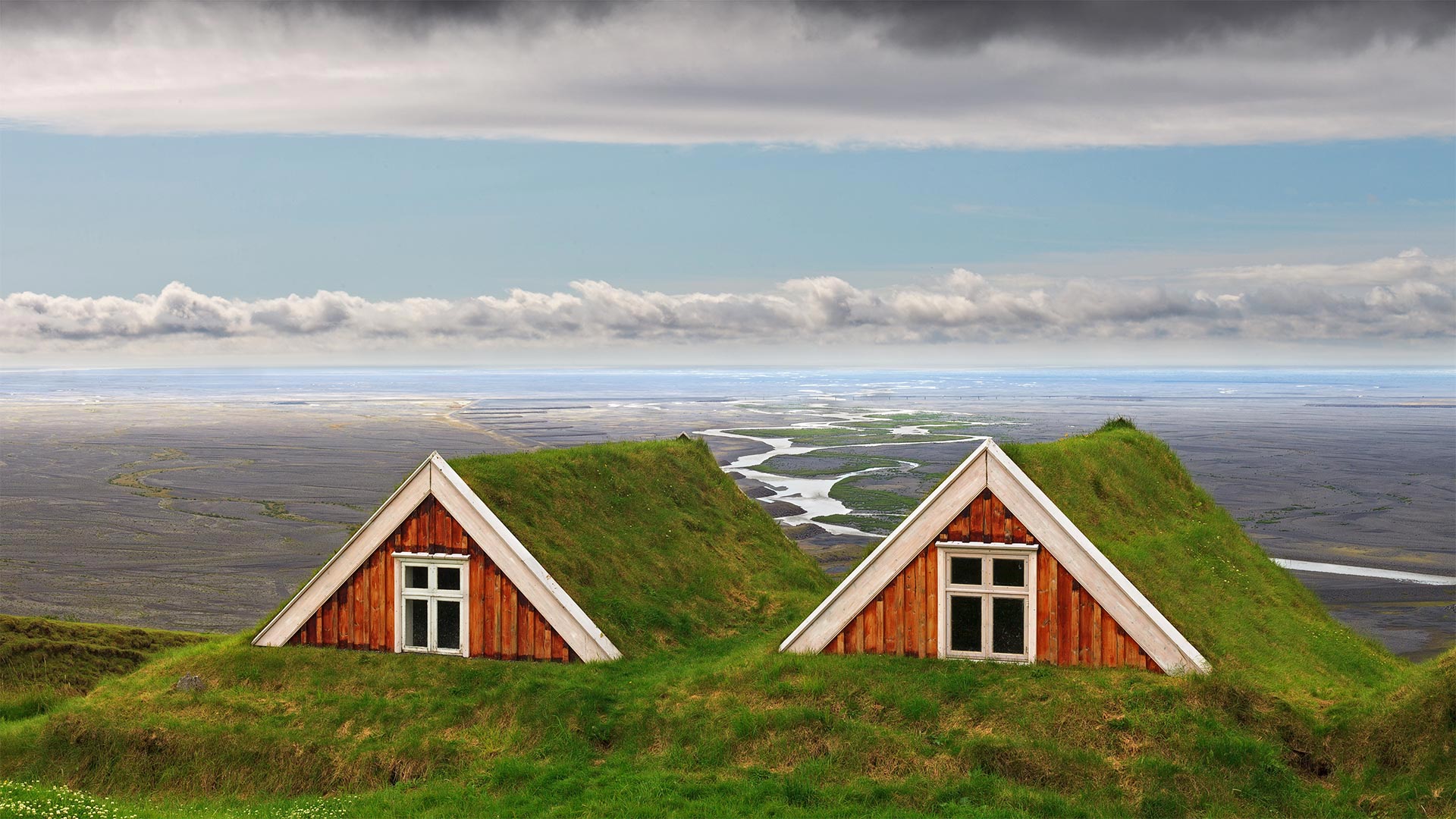斯卡夫塔山中的传统农舍,冰岛瓦特纳冰川国家公园 Traditional farmhouses at Skaftafell, Vatnajökull National Park, Iceland (© Jarcosa/Getty Images)

斯卡夫塔山中的传统农舍,冰岛瓦特纳冰川国家公园 Traditional farmhouses at Skaftafell, Vatnajökull National Park, Iceland (© Jarcosa/Getty Images)
Tough turf
Roofs of sod have sheltered mainland Scandinavians through countless winters and summers. But those who migrated from Norway's grass-roof log cabins to this Icelandic tundra in the 9th century found none of the rich timberland of their homeland—just wispy birch forests and grassy fields. To survive the cold, they took the old turf roof concept and built on it, encasing not only the roofs but the walls of their birch-framed homes in layers of living, insulating soil.
The turf buildings shown here are located at Skaftafell, a manor farm founded by early settlers and now part of Vatnajökull National Park. Unlike Icelanders' history, though, these huts aren't a millennium old: They date to the 19th century, when the plains in the distance began flooding and the farmers who'd made homes there were forced uphill.
坚硬的草皮
草皮屋顶遮蔽了斯堪的纳维亚大陆无数的冬夏。但是,那些在9世纪从挪威的草屋顶木屋迁移到冰岛苔原的人发现,他们的祖国没有一片富饶的林地,只有一望无际的桦树林和草地。为了在寒冷中生存,他们采用了旧的草皮屋顶概念,并在其上建造,不仅将屋顶,而且将桦木结构房屋的墙壁包裹在一层活的绝缘土壤中。
这里展示的草皮建筑位于斯卡塔菲尔,这是一个由早期定居者建立的庄园农场,现在是瓦特纳科尔国家公园的一部分。不过,与冰岛人的历史不同的是,这些小屋并没有千年的历史:它们可以追溯到19世纪,当时远处的平原开始泛滥,在那里建房的农民被迫上山。
评论已关闭